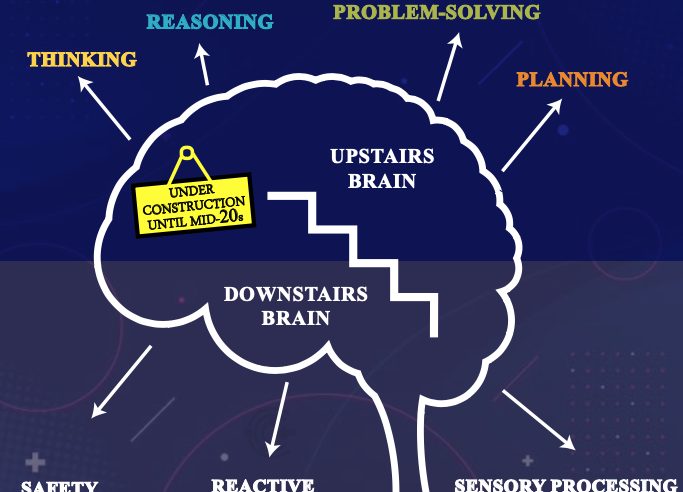
Upstairs Brain
I first learned of the descriptors “the upstairs and downstairs brain” when I read the Whole-Brain Child (Siegel, Bryson, 2012). The premise is simple and brilliant. The downstairs of a traditional house is where all of our basic needs are met. There’s a bathroom, a kitchen and a living area. Similarly, the “downstairs brain” is responsible for basic functions like breathing and heart rate, as well as sensory processing and sensing threat.
The upstairs brain is our more sophisticated, “thinking” brain. It’s not fully developed until our mid 20s! We must be able to access both our upstairs and downstairs brain. We need to be able to monitor the sensory input coming from our environment, think and problem-solve. When our kids are having a hard time, they’re in their “downstairs” brain. They can’t access their “thinking” brain, and no amount of yelling, threatening or punishment is going to get them there.
How do you help a child when they are in their downstairs brain? First, lower expectations. Help them get regulated. That could be as simple as a hug or just being present. Once regulated, only then they can head upstairs.
Next time your child is having hard time, say to yourself “downstairs brain”. It’s a great reminder in the heat of the moment to lead with empathy.
Join GregSantucci.com to get access to downloadable Infographics, new content and be the first to know about upcoming events and webinars!
Already Signed up? Login Here